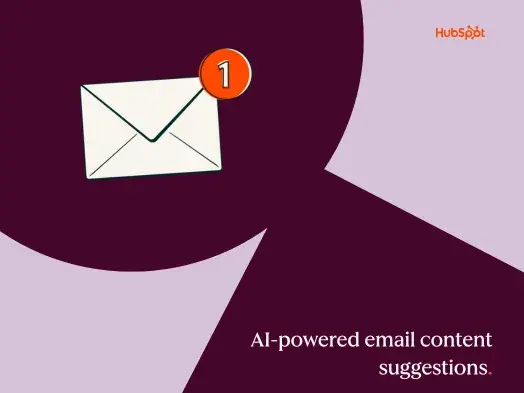I had two interesting discussions with marketing leaders recently. Both revolved around the same question: “Where do we start?”
One told me she’d road-mapped an entirely new content operation for her marketing department. She’d gotten the go-ahead from leadership, but everybody was so busy with other work that they weren’t sure how to move forward.
The second leader told me they were rethinking a project plan a large consulting firm delivered. It seemed logical and straightforward when the firm first recommended it. But now that it’s time to put people’s names in the project plan, it all seems overwhelming.
How did they do that?
Absorbing planned change can be incredibly difficult. You know it makes more sense to fix your (metaphorical) leaky plumbing, but it’s so much easier just to continue watering the lawn — even if it costs more.
One common reaction is to look at how other content and marketing teams handle similar situations. But looking through someone else’s lens rarely produces impressive results.
I’ve noticed that when people ask, “Can we do what they did?” they usually come up with one of these three answers:
1. If they did it, we surely can.
This response often comes with a hint of jealousy. It dismisses the person or team but applauds the map. I recently visited the Broad Museum in Los Angeles. While I stood before a Roy Lichtenstein painting made up of a series of rectangles, I heard a man behind me say, “I could do that — I should be a millionaire.”
Could he have done it? Maybe. But here’s the thing. He didn’t. Lichtenstein did – and became famous for it. That’s the lesson. Assuming you can do what someone else did (and get the same results) is the surest way to fail.
That brings me to the second typical response.
2. Give me the map to their content program, and I’ll be just as successful.
I call this response the template model. People look for the prototypical case study, template, or “proven” best practices to follow. And they expect to get the same results.
I’ve rarely seen teams following this approach produce results that match or exceed the original template or case study. The map is never exactly right for where they’re going.
Why? Because it doesn’t allow for your team’s particular skills (or lack thereof), goals, or context. I recently interviewed the person who architected one of the most successful content marketing projects in 2014. Today, it’s regarded as one of the OGs of content marketing strategy. But he told me there’s NO way he could repeat what they did 10 years ago. “It’s just a different time,” he said.
You have to customize any template or map to suit your circumstances.
That brings me to the third (and most useful) response.
3. Does anything like what I want to achieve already exist?
The most helpful response involves looking for guidance in projects that reflect the essence of what you want to achieve.
You may find it helpful to look outside your industry and study what made those efforts successful.
Looking beyond the familiar pushes you to interpret the idea through your creative lens. Instead of duplicating the exact form of the projects you study, look to them to spark innovation.
One of the leaders I spoke with last week benefited from this approach as she considered the challenges of leading new people, creating new workflows, and producing new outputs to support a new content strategy.
I advised her to look for current projects involving a disruptive change at a company that’s nothing like where she works. She studied how a product designer had implemented an internal design team for a financial services company.
The details differed, yet the example inspired her to discover new approaches.
Why the first step isn’t the doozy
OK, so you’ve bought into the plan. That’s the first step. But how do you get past the difficulty of getting started?
Do you know what tightrope walkers say is the most difficult step?
Most people believe it’s the first step out on the rope. But that’s not the case, according to the tightrope walker who narrates one of the short stories in the collection “Vigilantes of Love”:
“The hardest was the step after the first. That’s where you gained or lost your balance. That’s where it becomes a walk or a fall. After the second step, there is no going back.”
Taking that first step in a way that helps us feel confident about the essence we’re trying to achieve is critical. But it’s not the hardest one. When implementing a new content project, taking the second step is the hardest.
The second step involves committing to the vision. That’s when you walk or fall. That’s when there’s no going back. And, if you’re the leader, there’s no one to pin the success or failure on but yourself.
This three-step process will help you prepare whenever you need to introduce significant changes in your content strategy:
Step 1: Make the map yours
Start with your vision for what success with your new strategy looks like. Use the inspirational model that you identified as an example. Then, ask yourself, “What would need to be true for success?”
Write it all down. It sounds overwhelming, but you’ll be surprised at how settling it feels to create your visionary to-do list.
Explore the emotions you feel around the uncertainties involved. List all the things that scare you or could go wrong. List the things that could go right and that make you feel joy. Acknowledge that you can’t control how these things make you feel but can control how you react to them.
Then, of course, plan and map. Go back to your list of all the things that need to be true for the program to succeed, and then identify any “rocks” that might get in the way. Which ones need to be settled first? Second?
You’ve just imbued the plan with your vision. You’re ready to take that second step.
Step 2: Commit to the walk
The first step was challenging. But the most difficult part will be saying “yes” to the adventure you’ve designed.
One thing happens in almost every client consulting engagement I’ve ever had. Once we finish the approved business case and plan, I congratulate the client. Then comes a sigh and the inevitable words: “Yeah, but now we have to go do it.”
That’s step two. Commit.
You commit to walking. You tackle that first significant initiative. You go all in. You’re not following someone else’s template. You haven’t dismissed those who came before you because you felt you could do as good or better. You’ve developed your own recipe instead of trying to improve someone else’s.
The steps get easier
In the book I mentioned, the tightrope walker talks about more than just the first two steps. He says, “The third step is the beginning. It’s the complete motion forward on a new course.”
Completing that first initiative or overcoming your first challenge is the beginning. That’s when you start to see that things are working the way you thought they would. It’s much more satisfying than looking at the next step in a templated map.
From there, the book says, “The fourth step is an affirmation. And after the fifth step – it’s just walking.”
You’re on your way.
The journey of a thousand miles begins with a single step. But that most challenging second step gives you the confidence to keep moving ahead.
Updated from a March 2022 article.
HANDPICKED RELATED CONTENT:
Cover image by Joseph Kalinowski/Content Marketing Institute










